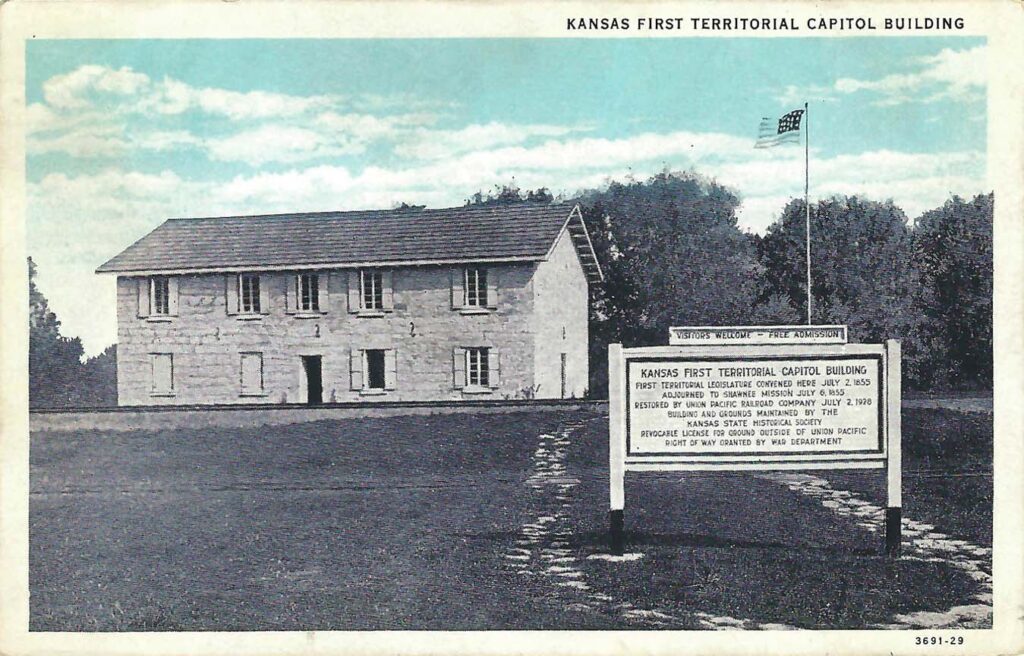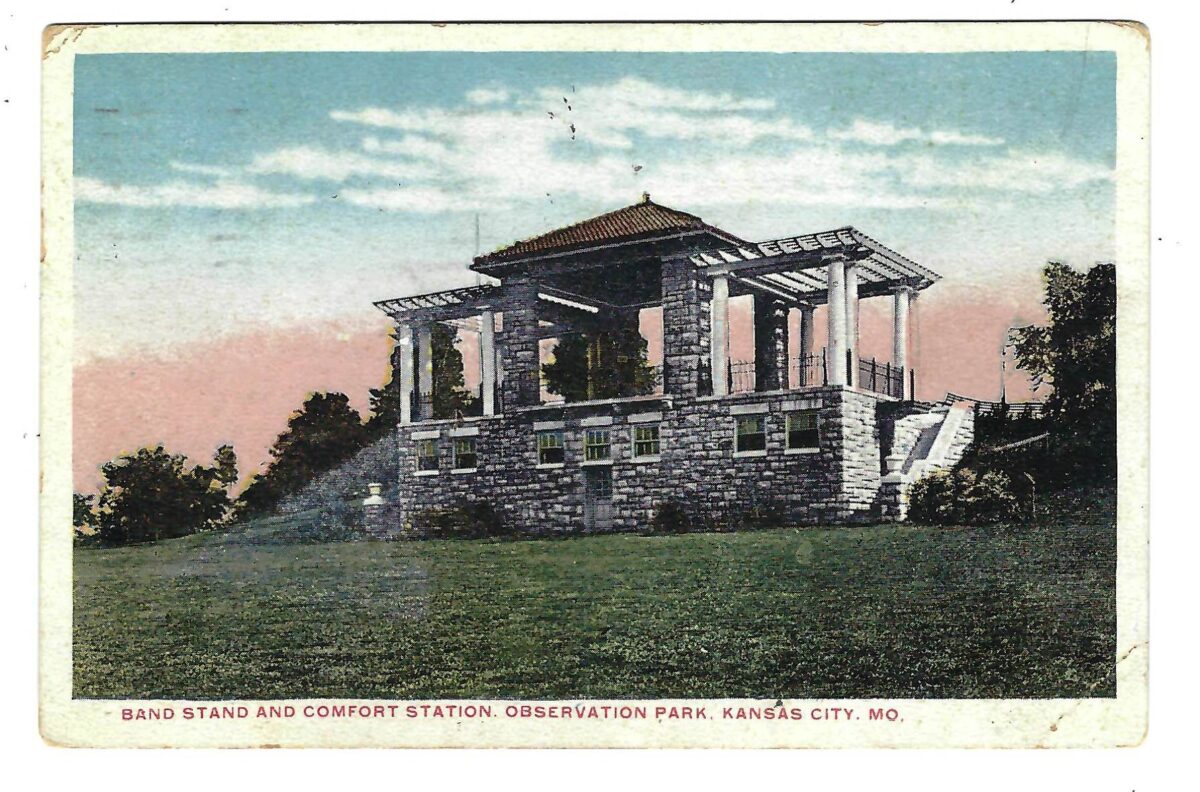
Michael Bushnell
Publisher
This week’s Historic postcard is a C.T. American Art Blue-Sky postcard published by E.D. Zellner of Junction City, Kan., showing the first Territorial Capitol Building, now located on the Fort Riley Army Post.
The building itself was built in 1855 during the Bleeding Kansas era prior to the American Civil War. It is the only surviving structure of the hastily constructed town of Pawnee, Kan., which was to act as the territorial capitol. Pawnee’s reign as capitol was short lived as the legislature, if one can call it that, met in the building for less than a week, July 2 through 6, 1855.
That legislature was made up of mostly pro-slavery Missouri men who had corrupted the general election process in order to get the new territorial capitol moved closer to Missouri – Shawnee Mission to be exact – and their constituents who illegally elected most of them. Of the 39 legislators seated, only eight had free-state ties. The other 31 were pro-Southern men with the intent to have Kansas admitted to the Union as a slave state.
The new legislature’s first order of official business was to unseat the eight free-state legislators by negating the March election results, following which they would replace the ousted free-staters with pro-slavery legislators. On July 4, the bogus legislature, a term which survives to this day in reference to that elected body, passed their bill to move the capitol back to Shawnee Mission. Newly elected Governor Andrew Reeder attempted to veto the measure but he was quickly voted down.
Two days later, upon adjournment of the session, the legislators packed up their belongings and quickly made their way back to Shawnee Mission, leaving the city of Pawnee and the 40’ by 80’ stone capitol building to fade into the sunset.
Fortunately, cooler heads prevailed and Kansas was admitted to the Union as a free state in 1861 by a legitimately elected legislative body, but not before bloody border skirmishes between pro-slavery Missourians and free-state minded Kansans grew to a fevered pitch, often leaving farms and fields burning and residents tortured, beaten and hung because their loyalties didn’t agree with whoever was asking the questions at that particular moment.
With the vacation of Pawnee, the building shown on the postcard was essentially left open. The Army used it as a warehouse and carpentry shop for a time as well as chaplains’ quarters. In 1877 the building fell victim to a Kansas wind storm and the roof was torn off and the interior left heavily damaged. Still the building stood, and some 30 years later, a restoration fund was established by Wichita native Colonel Samuel F. Woodard.
Almost $500 was raised through public subscription and work began in earnest on reinforcing the structure. The Union Pacific Railroad provided additional construction funding as the first legislature had granted the UP a franchise to build a transcontinental line through the state of Kansas. Over $20,000 came from the railroad for stabilization and restoration. The state itself kicked in another $1,000 from the annual budget for the cause, as well.
In 1927 the site was dedicated as a National Historic Landmark and on August 1, 1928, the site was dedicated and presented to the state of Kansas during a gala reception that was attended by over 10,000 people.
The building lies roughly a hundred yards west of a bend in the Kansas River, along the Union Pacific right-of-way. It was originally located outside of the boundaries of Fort Riley, but as the post grew, it was absorbed and is now located on post grounds. The museum houses exhibits dedicated to the history of Kansas road to statehood.
The sign in front of the building reads: “Kansas First Territorial Capitol Building. First Territorial legislature convened here July 2, 1855, Adjourned to Shawnee Mission, July 6, 1855. Restored by Union Pacific Railroad Company July 2, 1928. Building and grounds maintained by the Kansas State Historical Society. Revocable license for grounds outside of Union Pacific. Right of Way granted by War Department.”



















